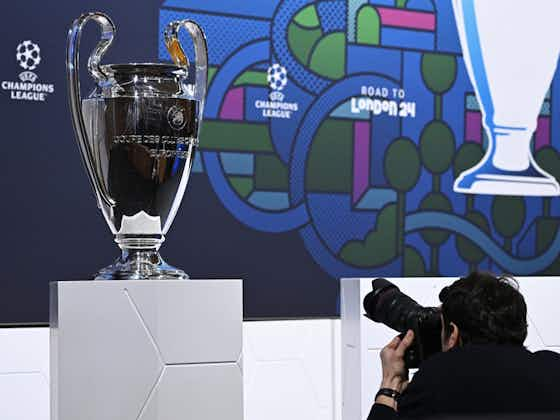The new expanded Champions League format is so complex that the draw will be made by computer, after Uefa found it would take up to four hours without digital assistance.
A 36-team competition comes into effect next season, with results from eight rounds of fixtures in the league phase – each team will face eight opponents, four at home, four away – forming a table. From there, the top eight teams go through to the round of 16, while 16 more play off to complete the knockout lineup. It is a system the governing body believes will deliver more big games and greater jeopardy than the current Champions League format, but explaining its intricacies may prove a challenge.

One example is in the initial league phase draw. Each team will be entered into one of four pots based on their Uefa ranking, as is the case in the existing format.
In a change from the current system, however, a team will face opponents from their own pot, one team at home and another away. They will also face two opponents from each of the other pots. With further details to consider, such as clubs from the same country being prevented from facing each other, the group stage draw becomes more and more complicated.
After trials showed the manual draw would take anywhere between three and four hours, roughly the same length as the Oscars, Uefa has decided that only the selection of an initial team from pot one will conducted manually. A computer programmed by a company in Hertfordshire will then choose that team’s opponents and whether they will be faced home or away. Uefa insists the process will be secure, and that it will be audited by the accountancy firm Ernst and Young to ensure the draws – which will be broadcast – are fair.
There will also be new developments later in the draw, with tennis-style seeding added to the knockout stages. The first eight through to the knockout stages will be seeded according to their league phase position, meaning the top two sides, as in a tennis Open, would not be able to face each other until the final. Clubs will be able to plot their route to the final once the last-16 draw, which is held before the playoffs, has been made.
There will be changes to the football calendar too, with each of Uefa’s three club competitions – the Europa League and Europa Conference League are also adopting a single league phase system – having one match week where only their fixtures take place. Giorgio Marchetti, Uefa’s deputy secretary, said the format would be “the most revolutionary, or evolutionary, change in 30 years”.
With this season’s competitions yet to reach the quarter-final stages, Uefa has got on the front foot in attempting to explain its new format. It has a lot riding on its success, with turbulence ongoing within European club football.
The new format has been under discussion since 2018 and was agreed upon by the Uefa executive weeks before the European Super League attempted its abortive launch.
The format will remain under intense scrutiny as owners and fans appraise its worth, with the Super League project still hoping to get off the ground and other potential challengers in prospect after a legal ruling that prevented Uefa from shutting down new competitions without good reason.
Uefa says it will share €1.2bn (£1bn) in solidarity payments each year from its club competitions to teams that are not participating and to other competitions across Europe. It also points to an expansion in the number of clubs able to compete in Europe, up from 96 to 108.
Under one, highly unlikely, scenario as many as 11 English clubs could qualify for Europe. The prospect of the Premier League gaining a fifth Champions League spot next season would be enhanced this week if West Ham knock out Freiburg, raising England’s Uefa ranking in the process.




